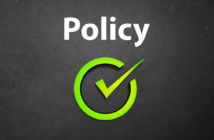
Over the past year, the COVID-19 pandemic has transformed the business landscape in America, and transportation companies faced many new and unique challenges. While the industry helped keep America running by delivering much-needed supplies and goods, trucking company owners faced an onslaught of challenges with maintaining basic business operations. As the industry returns to a more typical operating landscape, businesses need to be aware of a new hurdle that is approaching tied to changes to the accounting lease standard. To assist with implementing these changes and maintaining compliance, we are providing details on what transportation companies need to know.
The long-awaited change to the lease accounting standard ASU 2016-02, Leases (ASC 842) is effective for non-public, calendar year-end companies on January 1, 2022. Under the new lease standard, companies must record a right of use (ROU) asset and a lease liability on the balance sheet for most leasing arrangements. The new standard will impact your transportation company’s financial statements and could also impact your debt covenant and other calculations.
Given the volume and diversity of leased assets inherent in the industry, transportation companies face significant challenges in implementing and maintaining compliance with ASC 842. Transportation businesses may be party to leases of terminals, tractors, vehicles, equipment, trailers and storage units, each with different terms and conditions. In addition, the definition of a lease has changed under the new standard, which could result in the identification of leases embedded in service or other contracts.
How will the new lease standard impact your company?
- An increase in balance sheet assets and liabilities: Both operating and finance (formerly capital) leases are recorded on the balance sheet, and the amounts could be significant.
- A negative impact on your financial covenant calculations: Calculations that include the lease liability such as debt to EBITDA, debt to equity and fixed charge coverage will change and may result in noncompliance.
- Accounting policy and practice changes: Existing policies and practices must be reviewed and updated to ensure compliance.
Transportation companies must give themselves ample time to review and identify all contracts that could contain leases, including service and other contracts. Time is also needed for businesses to develop new lease reporting methods, policies and practices as necessary. The accumulation and organization of this information are time-consuming tasks, and there is no need to wait.
What does your company need to be doing now?
- Review debt covenant calculations and contact your lender. Read your debt agreements and review the covenant calculations to determine whether the calculations include debt and, therefore, could be negatively impacted. Discuss the potential amendments to your debt agreements sooner rather than later.
- Identify the contract population. Accumulate all active lease agreements and amendments and service and other contracts that could contain leases.
 Geoff Braun, CPA, is a Director in Moore Colson’s Business Assurance Practice. Geoff has over 20 years of experience leading audit and assurance engagements, primarily within the manufacturing, distribution and transportation industries. Moore Colson is an Affiliate Member of GMTA and proud Annual Sponsor of the Association.
Geoff Braun, CPA, is a Director in Moore Colson’s Business Assurance Practice. Geoff has over 20 years of experience leading audit and assurance engagements, primarily within the manufacturing, distribution and transportation industries. Moore Colson is an Affiliate Member of GMTA and proud Annual Sponsor of the Association.



